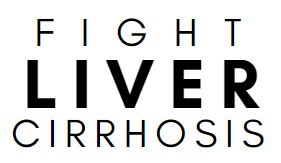Clear Skin, Clear Liver — Until It Wasn’t
In June 2024, skin clarity reflected systemic healing, confirming progress in liver function, inflammation control, and nutritional balance.
From late 2024 into early 2025, skin remained even-toned and healthy. That changed unexpectedly.
April 1, 2025: A Dietary Shift
On this date, chicken and goat broth were removed from the routine. Previously, the diet included:
• Chicken in clean-cooked forms, approximately two kilograms per week
• Goat feet broth consumed occasionally for collagen, glycine, zinc, and trace minerals
The removal aimed to simplify the diet. The effect on skin and biochemical markers became noticeable within weeks.
Symptoms That Followed
• Gradual appearance of pigmented patches on both legs
• Crusting and dryness in localized areas
• Reduced skin elasticity and increased fatigue
Blood test findings during this phase:
• Hemoglobin and serum iron dropped significantly
• Vitamin B12 declined
• hsCRP (C-reactive protein) increased, indicating systemic inflammation
This pattern was consistent with nutrient loss, collagen depletion, and a liver-skin axis imbalance.
FibroScan: A Paradox of Improvement
Despite visible decline in skin quality, liver stiffness improved between scans:
• December 2024: 36.2 kPa (F4 cirrhosis confirmed)
• July 2025: 25.3 kPa (still F4, but with measurable fibrosis softening)
CAP (Controlled Attenuation Parameter) score also improved from 263 to 177, suggesting reduced hepatic fat. These changes indicate that fibrosis reversal is in motion. However, structural healing without nutritional reinforcement created visible imbalances on the skin and in energy levels.
Nutritional Correction Plan (Starting August 2025)
The revised protocol includes:
• Reintroduction of clean-cooked chicken (2–3 servings per week)
• Filtered goat broth once per week
• Oral and topical glutathione
• Hydrolyzed collagen peptides
• Whey protein isolate or plant-based alternatives if needed
This adjustment aims to restore micronutrient reserves, support collagen synthesis, and maintain functional liver recovery.
Clinical Insight
Skin changes in cirrhosis are not superficial symptoms. They are visible endpoints of deeper metabolic deficiencies.
In compensated liver disease, shifts in B12, iron, glutathione, or protein availability often show up first on the skin. A scan may reflect structural improvement while surface tissues signal a different story.
Conclusion
Skin should be viewed as a biomarker. In cirrhosis recovery, it is often the most honest and immediate reflection of internal stability.
When the skin changes, the underlying system should be reassessed and rebalanced. Support must remain cellular, nutritional, and continuous.




0 Comments